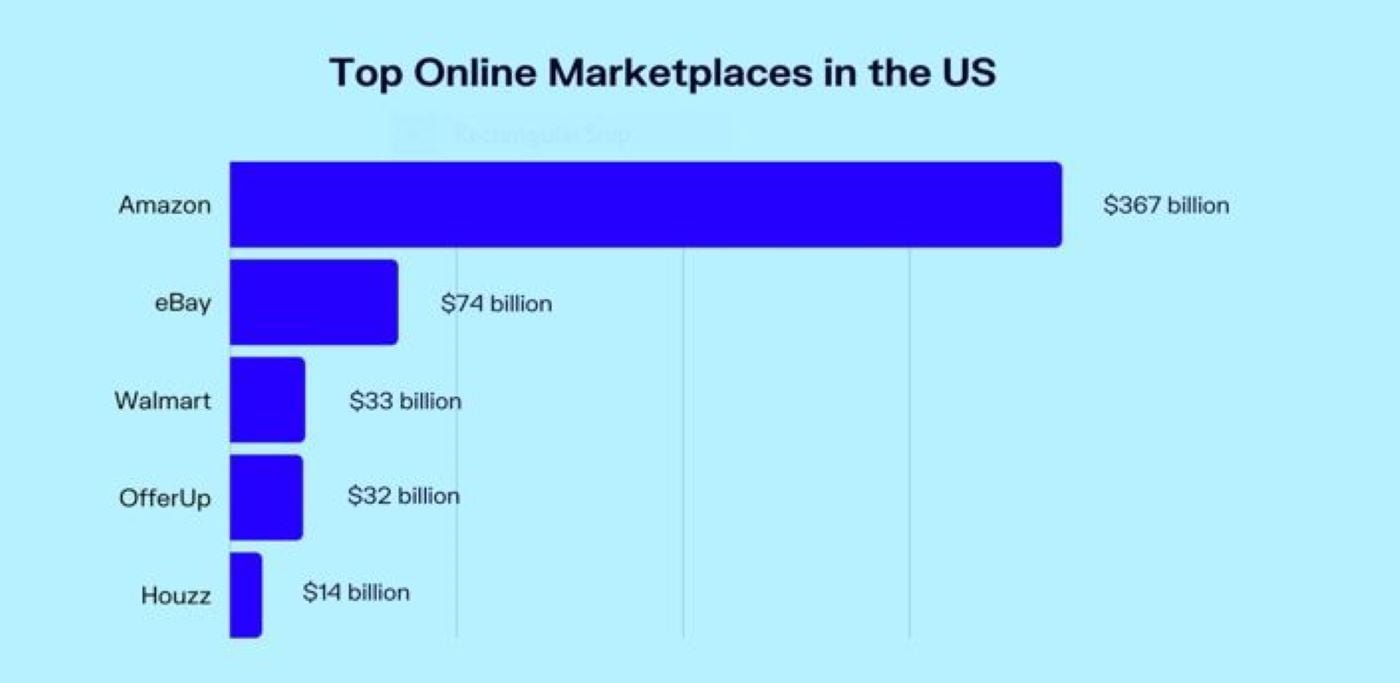If you’re uncertain about the process of expanding your business, rest assured—it’s more straightforward than you might imagine.
This is particularly encouraging because having a grasp of how to scale your online business will position you. You for the ongoing surge in e-commerce, especially on a worldwide level.
Were you aware that the projected worth of e-commerce retail sales is set to reach $8.5 trillion by 2025? Staying ahead of your competitors is crucial, and taking proactive steps now will be beneficial.
Scaling your business will help you not just gain new customers but understand the buyer’s journey,
Let’s get down to business.

Business Strategy Online Marketplaces
You’ve got to meet and keep up with demand as you grow. When the time is right, you need to know how to scale your business. Many digital marketplace startups. Share the belief that once they achieve product/market fit. Scaling the business will be relatively straightforward, if not easier. However, based on my experience assisting marketplaces through their growth phases. This stage introduces a fresh set of challenges and complexities distinct from the earlier phases of marketplace maturity. Numerous marketplace companies find mastering the growth phase more demanding. Given the broader array of internal and external factors, they must contend with. Acquiring a new set of skills and capabilities becomes essential for success.
Examples of challenges, or “growing pains,” that marketplaces encounter during the growth phase include:
- Legacy manual processes, such as customer vetting or transaction support. Struggle to keep up with the escalating demands of the expanding customer base, resulting in bottlenecks and missed growth opportunities.
- Despite successful initial seller acquisition efforts, marketplaces face difficulties in retaining sellers, leading to high churn. This necessitates allocating resources to acquire more sellers just to maintain current revenues, thereby limiting resources for broader expansion opportunities.
- Despite a strong founding vision, as headcount grows, inconsistent messaging emerges. Different groups of sales representatives may convey conflicting messages, such as one group emphasizing “value” while another prioritizes a “low cost” message, causing customer confusion and reducing sales.
- After gaining traction in one city and expanding nationally, marketplaces attract the attention of incumbent players, who launch competitive responses. Now, they must determine the best strategies to compete with these larger, well-funded competitors.
This article highlights critical success factors for marketplaces poised for growth. Emphasizing the need to align internal structures, processes, and growth engines to effectively accommodate and drive growth. While mitigating common marketplace growing pains.

1. Choosing the Right Marketplace:
Expanding your business starts with selecting the right online marketplace. Evaluate options based on your product niche, target audience, and the marketplace’s policies. Whether it’s Amazon, Etsy, or a specialized platform, aligning with the right marketplace is foundational to success.
2. Crafting an Irresistible Brand Presence:
Your brand is your identity. Learn how to create a compelling brand presence on online marketplaces. From an eye-catching logo to a captivating brand story, establishing a strong brand identity enhances customer trust and loyalty.
3. Optimizing Product Listings for Visibility:
Standing out in the crowded digital marketplace requires optimization. Explore the art of crafting keyword-rich product listings with high-quality images and engaging descriptions. Understand the algorithms that drive search results and implement strategies to boost your products’ visibility.
4. Implementing a Seamless Customer Experience:
Customer satisfaction is paramount. Dive into the tactics of providing a seamless online shopping experience. From easy navigation to secure payment options, prioritize elements that enhance customer satisfaction and encourage repeat business.
5. Strategic Pricing and Competitive Analysis:
Setting the right price is a delicate balance. Conduct a thorough competitive analysis, understand market trends, and implement dynamic pricing strategies. Find the sweet spot that attracts customers while ensuring profitability.
6. Building a Robust Marketing Strategy:
Marketing is the key to expanding your business. Explore the myriad of marketing tools available on online marketplaces, including sponsored ads, promotions, and social media integration. Develop a holistic marketing strategy to increase brand visibility and drive traffic to your store.
7. Leveraging Customer Reviews and Ratings:
Reviews and ratings serve as social proof and influence purchasing decisions. Learn how to encourage positive reviews, address negative feedback proactively, and leverage customer testimonials to build credibility.
8. Navigating Logistics and Fulfillment:
Efficient logistics are the backbone of successful e-commerce. Explore fulfillment options, shipping strategies, and inventory management to ensure timely delivery and customer satisfaction.
9. Data-Driven Decision-Making:
Harness the power of data analytics to make informed decisions. Analyze sales trends, customer behavior, and market demands to adapt your strategy and stay ahead of the competition.
10. Adapting to Emerging Trends:
The digital landscape is ever-evolving. Stay abreast of emerging trends in e-commerce, from augmented reality to voice commerce. Embrace innovation to remain relevant and stay ahead of the curve.
Here are some well-known online marketplaces:
- Amazon
- eBay
- Alibaba
- Etsy
- Walmart Marketplace
- Shopify
- Newegg
- Rakuten
- Zalando
- MercadoLibre

The popularity and relevance of these marketplaces may vary depending on your geographic location, the nature of your products, and your target audience. Always research and choose the platforms that best align with your business goals.
There are a few points to scaling a marketplace:
- defining a strategy,
- standardization,
- automation,
- employing growth levers.
Your optimal growth approach will hinge on your position concerning these key considerations.
Nail your product-market fit:
To build a successful brand. You need to have a product that meets an existing market need along with a brand story. That’s honest, transparent, and reflective of your brand’s personality. Launching an influencer-backed brand takes more than having a huge follower list.
Establish a Proof of Concept
Before seeking funding. Establish a robust foundation by investing in a minimum viable product (MVP) to attain a level of relative success. Building a proof of concept serves as a proactive approach. To identify and tackling potential risks and challenges in the early stages, ultimately saving time and resources while mitigating potential failures in the long run.
Establish a DTC presence for your brand
While there are a variety of different e-commerce business models. One advantage of establishing a DTC product line is that it means your brand is where the people are—online.
Define Your Audiences through Segmentation
Audience segmentation plays a pivotal role in this equation. Employing a systematic approach to drive customer engagement. One that nurtures relationships and enhances conversion rates—empowers e-commerce businesses to achieve scalable growth.
Make it easy for customers to find you
Ensuring that customers can effortlessly find what they’re looking for is a fundamental aspect of creating a positive user experience. Businesses should prioritize user-friendly navigation, intuitive search functionalities, and well-organized product categories. By focusing on these elements, businesses not only enhance customer satisfaction. Increase the likelihood of attracting and retaining a broader audience.
Invest in customer retention
Investing in customer retention is a strategic imperative for businesses aiming to foster long-term success. While acquiring new customers is undoubtedly important, retaining existing ones is equally—if not more—crucial. Allocating resources to build and maintain strong relationships with current customers pays dividends in loyalty and recurrent business. Satisfied customers become brand advocates, contributing to sustained growth and a sterling reputation in the marketplace.
Prioritize profitability at every stage
Prioritizing profitability at every stage of a business’s development is a fundamental principle that underpins sustainable growth. From the initial stages of product development and market entry to the scaling phase, maintaining a focus on profitability ensures the business’s financial health and resilience. It empowers companies to weather economic uncertainties, attract investment, and ultimately build a robust foundation for enduring success.

In Conclusion, As you embark on this exciting venture, remember that our services extend beyond just guidance. We offer comprehensive solutions to ensure your seamless integration into online marketplaces. Empowering you to focus on what you do best—running your business.
Ready to take your business to new heights? Contact us and let’s explore the possibilities together. Your success in the world of online marketplaces awaits!


